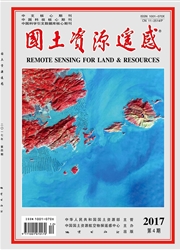

 中文摘要:
中文摘要:
以北京市为研究区域,联合使用光学遥感数据和雷达数据,对植被覆盖区地表土壤水分进行反演研究。在利用同期光学数据提取出归一化水分指数( normalized differential water index,NDWI)之后,利用water-cloud模型去除植被层在土壤水分后向散射中的贡献,然后考虑到地表粗糙度,在构建后向散射数据库的基础上分别利用HH和HV极化方式的后向散射系数构建土壤水分反演模型,并对反演结果进行对比研究。结果表明,采用HH极化方式反演土壤水分的均方根误差为0.044,相对误差为15.5%;采用HV极化方式反演土壤水分的均方根误差为0.057,相对误差为20.3%;相比而言,HH极化的反演效果更好。
 英文摘要:
英文摘要:
Taking Beijing as the study area, the authors developed a method of soil moisture inversion by using Radar data and optical remote sensing images in the vegetation -covered area. Firstly, NDWI was extracted by using homochronous optical images, and then water - cloud model was used to eliminate the contribution of backscattering coefficients caused by the vegetation. Secondly, HH and HV backscattering coefficients were employed to construct the soil moisture inversion model in consideration of surface roughness based on backscattering database built by AIEM model and Oh model. Then the simulating data were used to validate the accuracy of this model. The result shows that the RMSE and relative error of HH is 0. 044 and 15. 5%, and the RMSE and relative error of HV is 0. 057 and 20. 3% respectively. It is proved that the result of using HH backscattering coefficient is much better than that of using HH backscattering coefficient.
 同期刊论文项目
同期刊论文项目
 同项目期刊论文
同项目期刊论文
 期刊信息
期刊信息
